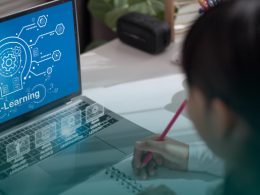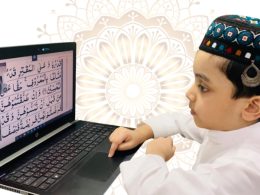As technology continues to advance at a rapid pace, it’s no surprise that the education industry is also evolving to keep up with these changes. From artificial intelligence (AI) to augmented reality (AR), emerging technologies are transforming the way we learn and interact with information. In this blog post, we’ll take a closer look at how these innovative tools are shaping the future of learning and what it means for students and teachers alike. Get ready to discover how AI is revolutionizing personalized learning, why AR has become a game-changer in classroom engagement, and more!
What is AI?
What is AI?
AI, or artificial intelligence, is a branch of computer science focused on the creation of systems that replicate or exceed human performance on certain tasks. Most commonly, this refers to the ability for machines to learn and work on their own, rather than requiring explicit input from humans. This can be done through a number of methods, including but not limited to: rule-based systems, decision trees, genetic algorithms and neural networks.
There are many potential applications for AI-enabled learning systems in both education and workplace settings. One such application is automated learning modules for online courses. This technology can help professors teach large classes more efficiently by automating the process of grading and feedback submission. Additionally, AI-assisted learning tools could provide personalized educational experiences for students based on their individual interests and goals.
Aside from online learning platforms, AI has also been used in traditional classrooms to enhance instruction. For example, teachers can use AI tools to create custom lesson plans or assign complex homework problems using machine learning algorithms. In addition, AI-assisted assessments could help teachers identify weaknesses in student understanding and track student progress over time. All of these applications have the potential to make learning more efficient and personalized for students while also reducing teacher workloads.
As we move into the future with more advanced technologies like AR (Augmented Reality), it’s important to keep in mind how they will shape our educational landscape moving forward. By incorporating AI into curriculums at
How AI is Used in Learning
AI has been used in a variety of ways to improve the way we learn, from teaching computers how to teach themselves, to creating intelligent tutors that can help students with specific areas of learning. The future of learning is likely going to be shaped by emerging technologies such as augmented reality (AR), which will allow us to interact with information in a more immersive way. AR will be particularly useful for teaching complex subjects, as it can help students visualize what they are learning.
The Advantages and Disadvantages of Using AI in Learning
The Advantages and Disadvantages of Using AI in Learning
From AI to AR: How Emerging Technologies are Shaping the Future of Learning
The use of artificial intelligence (AI) has already had a significant impact on learning, with many people predicting that it will play an even bigger role in the future. Here are some of the advantages and disadvantages of using AI in learning:
Advantages
1. AI can help learners retain information better. This is because it uses cognitive techniques that humans use to remember information, including summarization, categorization, and linking.
2. AI can help learners learn in a more effective way. This is because it provides personalized feedback and helps learners focus on the material they need to learn rather than being distracted by extraneous information.
3. AI can help learners learn faster than they would without it. This is because AI can identify patterns in data and make connections between different pieces of information that would otherwise be difficult for a human to do.
4. AI can help educators create more effective learning environments by automatically detecting which types of learning activities work best for particular groups of students and then providing customized instructions accordingly.
AR and VR: The Future of Learning
Augmented reality (AR) and virtual reality (VR) are quickly becoming the future of learning. This is because they allow students to learn in a more immersive way than traditional learning methods. AR and VR can be used to enhance classroom instruction, help students learn new information more effectively, and increase student engagement.
AR and VR have already started to impact the world of education. For example, one school in China is using AR to help students learn Chinese characters. The school first creates digital guides for students to follow. These guides show how each character is pronounced, written, and composed. The next step is for the students to use the characters in their sentences. This helps them better understand Chinese culture and language.
AR and VR are also being used in hospitals to teach medical procedures to patients. Patients can watch videos that show them how to perform a certain surgery or take care of a specific health issue. This way, they can learn without having to experience the situation firsthand.
In the future, AR and VR will continue to impact education by making it easier for students to learn new information and skills. They will also be used more frequently in training programs that prepare people for jobs or college classes.
Conclusion
The future of learning is looking incredibly bright. From artificial intelligence (AI) to augmented reality (AR), emerging technologies are changing the way we learn and remember information. AI helps us understand complex concepts, while AR opens up new ways for us to experience and learn about the world around us. These technologies are revolutionizing how we learn, and they have huge potential implications for the future of education.












